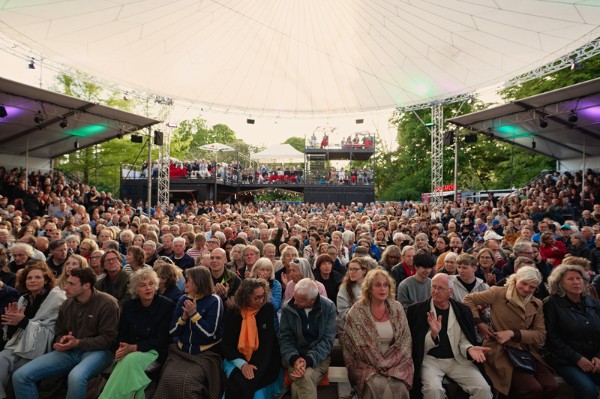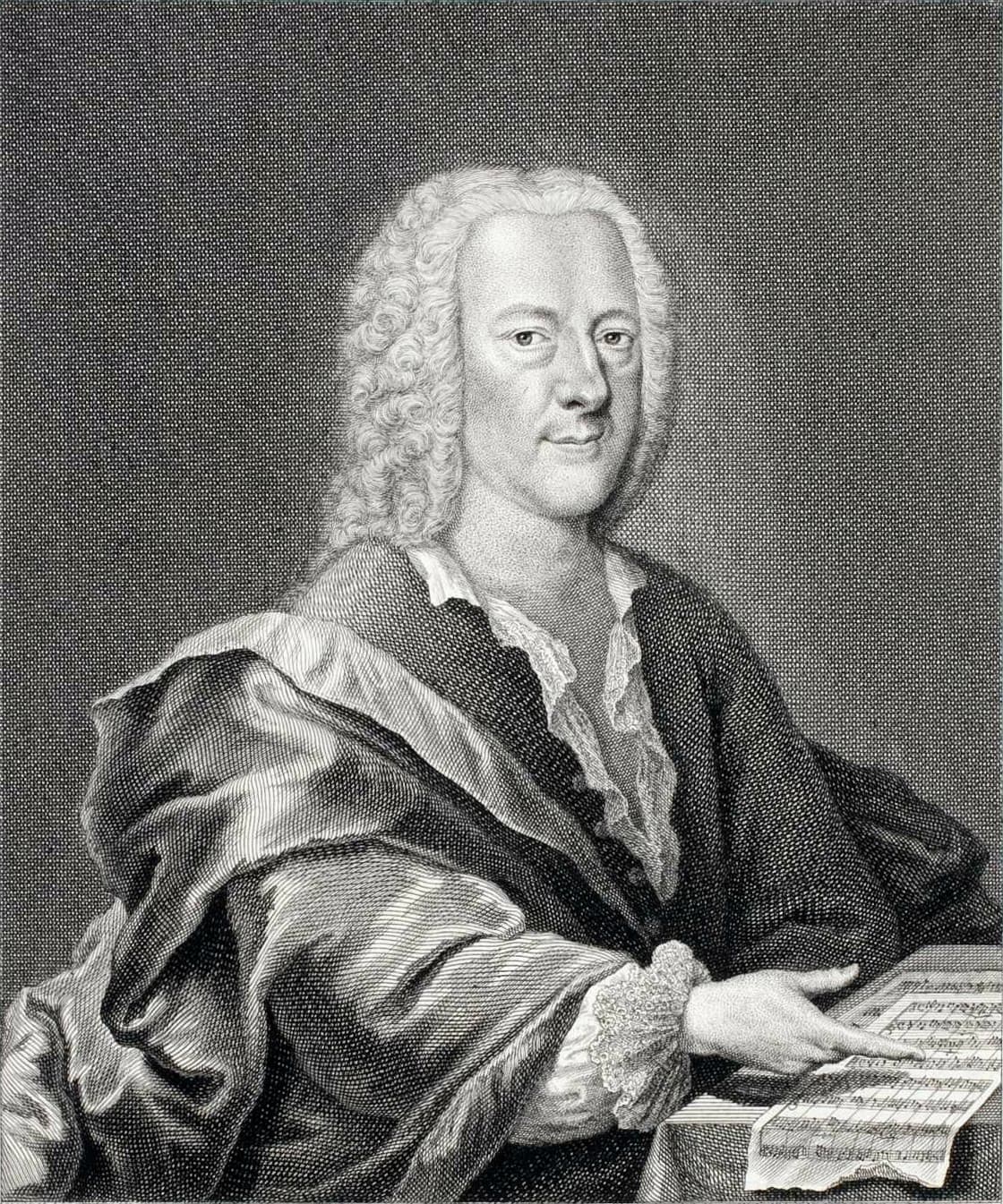In Renaissance Europe, the well-dressed man about town did his best to be the ultimate in culture and style. Style was taken care of by the clothes he wore but culture was a different matter. Because of what seems to be our innate propensity to collect stuff, the Wunderkammer was born.
The Chamber of Curiosities could show the breadth of the collector’s interests or focus on just a few very strange things. In this painting of a cabinet of curiosities from the late 17th century, we can see art and objects: sea paintings and coral, a rhinoceros beetle and a flint-lock pistol, a pocket watch and carved ivory orbs, jewels and skulls.
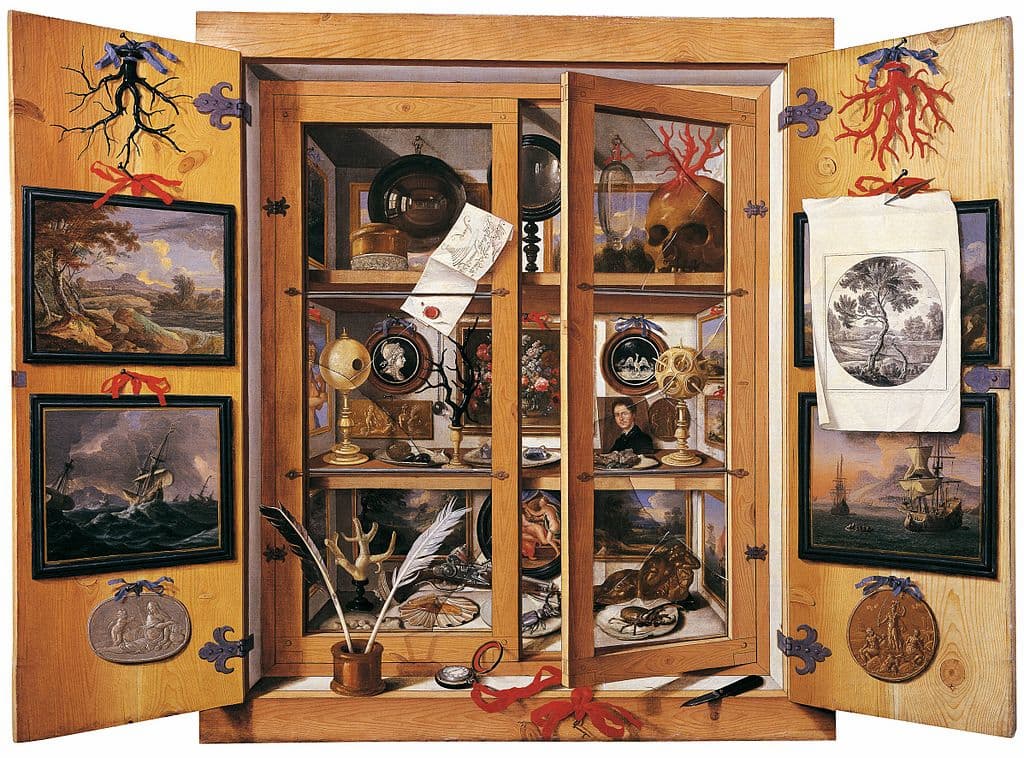
Domenico Remps: Cabinet of Curiosities, 1690 (Florence: Opificio delle pietre dure)
This engraving by Daniel Mariot the younger shows a room of such cabinets.
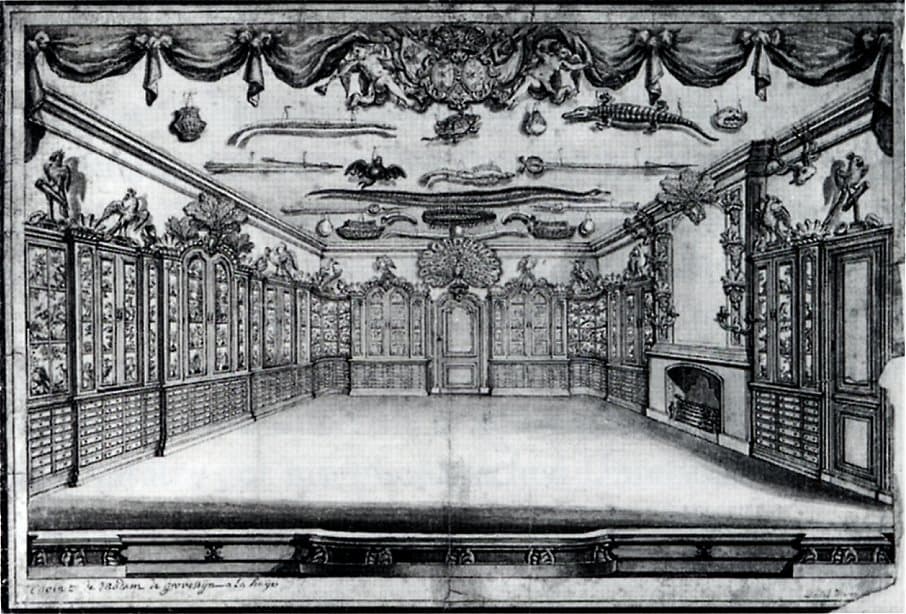
Daniel Mariot the younger: Cabinet de Madam de Grovestijn à LaHaye, 1756
Notice that the ceiling holds things too big for the cabinets, like the stuffed crocodile.
How can you set this to music? In the hands of movie composer Danny Elfman, who is skilled at bringing out the magic of a scene (Pee-wee’s Big Adventure, Edward Scissorhands, The Nightmare before Christmas, Charlie and the Chocolate Factory, and so on) for more than 100 movies, the idea of the Wunderkammer was an invitation to imagine.

Danny Elfman, 2023 (photo by Xavier Collin)
Commissioned before the COVID lockdown by the National Youth Orchestra of Great Britain, it gave Elfman the opportunity to create a work that would be challenging for the youth orchestra and at the same time exciting.
Through the three-movement work, Elfman choses different instrument sections to feature and has an unusual requirement for a choir – to be sung by the women members of the orchestra.
The door opens and the world is revealed to our curious eyes – the strings dance us along.
Danny Elfman: Wunderkammer: I. — (Royal Liverpool Philharmonic Orchestra; JoAnn Falletta, cond.)
Movement II opens with the woodwinds in a slow, pensive beginning.
Danny Elfman: Wunderkammer: II. — (Royal Liverpool Philharmonic Orchestra; JoAnn Falletta, cond.)
The final movement opens much like the first, but with a far more dramatic undertone. Brass comes to the fore with the woodwinds as a lighter echo.
Danny Elfman: Wunderkammer: III. — (Royal Liverpool Philharmonic Orchestra; JoAnn Falletta, cond.)
Throughout the work, the percussion section, with celeste, glockenspiel, chimes and all kinds of drums, provides the impetus to drive the work forward and excites the audience in addition to all the work by the rest of the orchestra. One reviewer described the work as having an ‘almost-comic house-of-horror vibe’. At the same time, you want to keep walking through the rooms of wonder, peer into the next cabinet, and prepare to be surprised, or horrified, or amazed, or informed.
The National Youth Orchestra of Great Britain performed the premiere of the work on August 3, 2022, in Manchester and three days later at the 2022 Proms in London.
Danny Elfman’s Wunderkammer
It’s a bravura work written for a youth orchestra – an unusual combination that showcases the real capabilities of young musicians. Elfman said, ‘A collection of curiosities… I can’t wait for them to open this cabinet of curiosities that I’ve created for them’.
Wunderkammers were the forerunners of today’s museums. The passion for collection that hit 16th century princes and nobles was extended to show those collections to the rest of society. As can be seen in Remp’s trompe-l’œil painting above, it wasn’t only art that was collected but also books from all areas of knowledge, coins and medals, astronomical instruments, globes and atlases, skeletons, fossils and minerals, technically sophisticated ivory turnings, artistically engraved ostrich eggs, preciously set coconuts and much more. Collections could be divided into four groups: naturalia (natural objects, works of nature), artificialia (artifacts, things created by human hands), scientifica (scientific instruments), and exotica (items collected from distant countries). We can see all groups clearly represented in Remps’ image, but a collector might only pursue one of the lines. The Green Vault (Hist. Grüne Gewölbe) in Dresden, Germany, dates from 1723 and one of the largest remaining Wunderkammers in Europe.
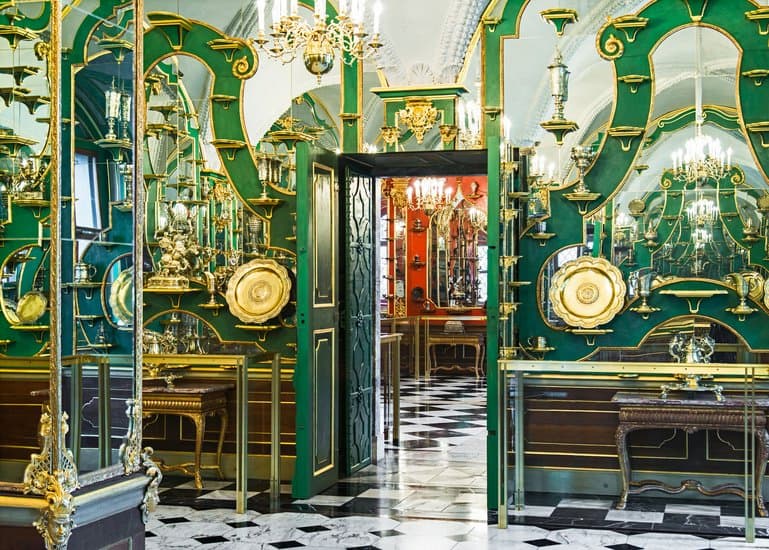
The Silver-Gold Room of the Dresen Green Vault
What’s in your Wunderkammer, even if it’s only in a box under the bed?
For more of the best in classical music, sign up for our E-Newsletter

